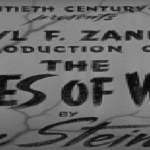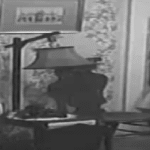Swamp Women is a 1955 American crime adventure film directed by Roger Corman. Set in the steamy, treacherous swamps of Louisiana, the story is a pulpy tale of deception, greed and survival, all filtered through the lens of a low-budget B-movie with a bold, exploitative edge. Although modest in scope and clearly constrained by production limitations, it delivers an oddly compelling experience rooted in tension, atmosphere and the dynamic between its central characters.
The film opens in a gritty prison where three women inmates , Josie, Vera and Billie are serving time for a violent diamond heist. Their stolen loot was never recovered and lies buried deep in the bayou. The authorities, determined to retrieve it, devise a daring plan. A policewoman named Lee Hampton is sent undercover into the prison as an inmate, posing as a hardened criminal in order to gain the trust of the three convicts. Her mission is to escape with them and discover the location of the hidden jewels.
The breakout is planned carefully. The women overpower a guard and slip away under cover of darkness, heading into the vast, humid swamp that surrounds the prison. From the start, the escape is fraught with mistrust and power struggles. Josie, the leader, is dominant and brash. Vera is cynical, hardened and suspicious of everyone. Billie is quieter, more reserved but no less dangerous. Lee must navigate this volatile group dynamic while concealing her true identity. Tension builds as the women make their way through the treacherous terrain, pursued by law enforcement and constantly at risk of exposure.
As they journey deeper into the swamp, the group commandeers a boat from a man named Bob Matthews, a rugged outdoorsman on a leisure trip. He becomes an unwilling hostage, adding a new dimension of conflict and threat to the group. Josie immediately asserts control, flirting with Bob and challenging Lee’s authority, sensing that Lee is not who she claims to be. Bob, meanwhile, begins to grow suspicious of the group’s motives and develops an uneasy rapport with Lee. Their interactions introduce a sliver of romantic tension, though it is subtle and mostly drowned out by the overarching sense of danger and mistrust.
The landscape itself becomes a character in the story. The swamp is dense, hot and filled with hazards, both natural and human. Alligators glide silently through murky waters. The constant hum of insects underscores every scene. The oppressive atmosphere adds weight to the already mounting pressure among the fugitives. As supplies run low and tempers flare, old rivalries surface. Vera begins to suspect Lee’s true identity, fuelling further aggression and paranoia.
As the group approaches the location of the buried diamonds, greed becomes the dominant force. Josie and Vera begin to plot against each other. Billie, caught in the middle, struggles to remain loyal. Lee, still committed to her mission, must tread carefully to avoid being exposed before the diamonds are recovered. The tension reaches a breaking point when the diamonds are finally unearthed. Rather than marking the end of their journey, the discovery sparks a violent power struggle.
A deadly confrontation ensues. Vera turns on Josie, attempting to claim the loot for herself. A chaotic fight breaks out, during which alliances fracture completely. Lee, trying to maintain order and complete her mission, is forced to make difficult choices. In the final act, as law enforcement closes in on the group, Lee’s identity is revealed. Bob, having come to trust her, aids her as she struggles to escape the now-violent outlaws.
The climax unfolds with a final showdown in the swamp. Josie, refusing to surrender, is taken down after a tense standoff. Vera meets a more tragic end, undone by her own treachery and mistrust. Billie, having stayed largely neutral, surrenders quietly, exhausted by the ordeal. Lee, though bruised and emotionally spent, completes her mission and secures the diamonds.
In the end, justice prevails, but the victory feels hollow. The journey through the swamp has taken its toll on everyone involved. The diamonds, once the central goal, now seem secondary to the physical and emotional trials endured. Bob and Lee share a quiet moment, hinting at a future beyond the chaos, though nothing is certain.
Despite its limited budget and occasionally stilted dialogue, Swamp Women is notable for its pulpy charm and atmosphere. The performances, while often exaggerated, are fitting for the genre. Beverly Garland, who plays Lee, gives the strongest performance, balancing toughness with vulnerability in a role that could easily have been one-dimensional. The other women, though caricatured at times, offer distinct personalities that fuel the story’s internal conflict.
The film taps into a mid-century fascination with both female criminals and the exoticism of the American South. It walks a fine line between exploitation and adventure, often leaning towards the former. The depiction of women as both capable and dangerous was unusual for the era, though filtered through a male gaze that emphasises sexuality and sensationalism over realism. The film’s treatment of its female characters is both progressive and regressive they are active agents in their own story, but frequently reduced to stereotypes.
Roger Corman’s direction is brisk and efficient. Known for his ability to work quickly with limited resources, he manages to create a palpable sense of place with minimal set dressing. The swamp is used effectively as a setting that reflects the characters’ psychological states — murky, unpredictable and perilous. The use of natural locations lends the film a surprising authenticity, even when the script veers into melodrama.
The score, though sparse, heightens the suspense during key moments and adds to the overall mood. The pacing is uneven at times, with some sequences dragging while others rush by. However, the central conflict, the uneasy alliance of the women, Lee’s undercover mission and the looming presence of the stolen diamonds, remains engaging throughout.
Swamp Women is far from a masterpiece, but it has earned a place in cult cinema history. It reflects the era’s fascination with crime, adventure and the wilderness, and its female-driven plot makes it a curious outlier among 1950s crime films. While it does not subvert every trope it indulges, it provides a snapshot of mid-century B-movie sensibilities, blending crime drama with a swampy, sun-drenched noir aesthetic. There is a rough charm to its ambition, an energy that transcends its limitations and makes it a memorable, if flawed, piece of pulp cinema







